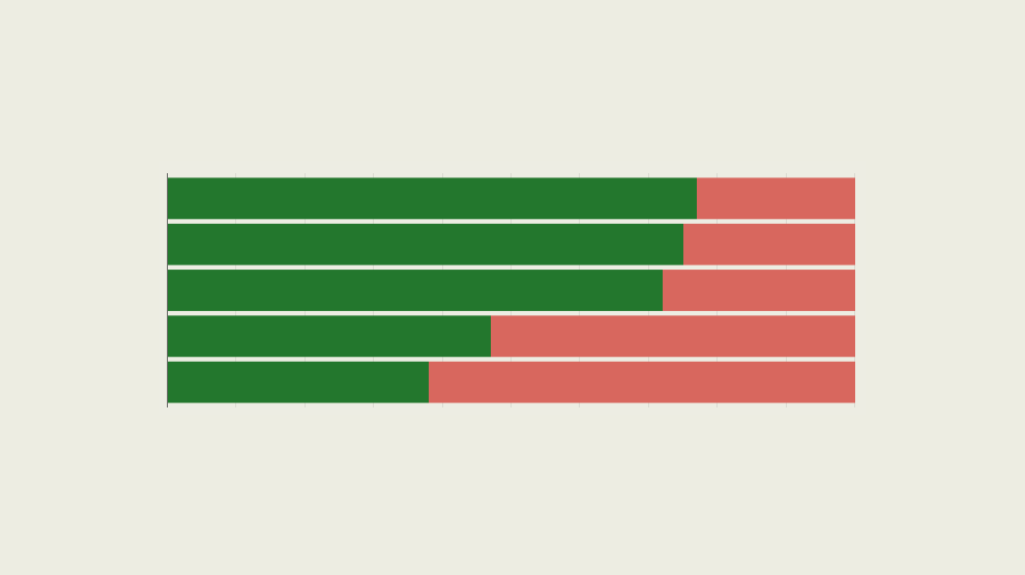Explainer: The Challenge of Reintegration in Colombia
Explainer: The Challenge of Reintegration in Colombia
After 50 years of civil conflict, one agency is tasked with the hurdle of reintegrating ex-militants and guerrillas back into society.
After more than 50 years of civil conflict, the Colombian government is currently in peace talks with the Revolutionary Armed Forces of Colombia, known best as the FARC. As the government and guerrilla group work through their agenda, one formidable task—and one that will persist even if and when an agreement is reached—deals with how to reintegrate the tens of thousands of men and women who have exited, or “demobilized,” from the FARC and other rebel and paramilitary groups over the years back into Colombian society.
Who is handling reintegration?
The Colombian Agency for Reintegration, known locally as ACR, is the government group responsible for these efforts. The roots of the agency go back to 2003, when it was a program under the Ministry of the Interior and Justice. In 2006, it was converted into a presidential council, which, as General Director Joshua Mitrotti told AS/COA Online in an interview in Bogota, was “very informal,” and could have been disbanded at any time. When President Juan Manuel Santos came to power in 2010, explains Mitrotti, he decided that the reintegration work needed to be institutionalized and have more long-term stability, and so he authorized Congress to start the process of formalizing the council’s work. In 2011, the ACR was formally created. Today it operates on an annual budget of about $56 million, 93 percent of which comes in the form of government funding.
Who are the demobilized?
Since 2003, when the government first began tracking demobilization and reintegration statistics, more than 57,000 former members of various guerrilla and militant groups demobilized, and more than half of those demobilizations occurred when the paramilitary group United Self-defense Forces of Colombia (AUC) collectively demobilized in 2006, at which point demobilizations of paramilitaries concluded. The bulk of the rest of the demobilizations are individual: FARC members make up the next largest demobilized population. Today, says Mitrotti, the agency works exclusively to reintegrate former members of the FARC and another guerilla group, the National Liberation Army (ELN).
While profiles vary from region to region, the typical demobilized person, says Mitrotti, is male, spent some 20 years in a rebel group, and is of working age. About two-thirds of the demobilized come from rural areas, and most are illiterate. Many of them exit the groups with broken family ties—some in fact originally joined the groups to escape mistreatment or abuse at home, he says. Nine out of 10 suffer psychologically or physically from their time in the groups.
While many demobilized persons seek to go back to their original communities, it has not always been possible. Men and women exiting the FARC and ELN used to head to cities, where they’d enjoy greater anonymity and, therefore, security. But in the last few years, especially in the south, the demobilized are staying more often in the area where they demobilized for one important reason: “We’re starting to get the sense that they’re losing fear of the organizations,” says Mitrotti. He attributes this change to the advancements of state institutions. In 2002, he says, almost 700 of the nearly 1,200 municipalities in the country had no local police or elected mayors and other officials. Today, 100 percent of the country’s territory has a police presence and elected officials. (ACR works directly with 148 of these municipalities.)
What businesses are hiring the demobilized?
Reintegrating a demobilized person is one side of the process. On the other side are the communities and businesses who receive the demobilized—and that’s much easier said than done. There are an estimated 7.3 million victims harmed by Colombia’s decades of conflict with the rebel groups, and a high level of stigmatization remains toward ex-rebels among the population. While studies show that a majority of the Colombian society supports the peace process, says Mitrotti, only 37 percent say they’re open to working with the demobilized in their reintegration.
“We don’t ask a company to hire a demobilized person for his or her sake—we ask that they don’t reject the demobilized person because they’re demobilized,” says Mitrotti. He says the ACR works to tailor its offers to each business, depending on the business' needs and the sector.
When they’re looking for work, many demobilized men and women seek out informal employment, where they don’t need much training or literacy skills, and also where they don’t have to detail out any past work experience, such as jobs in agriculture or construction. Mitrotti said one mother of three opened a small food truck in 2009 that’s a growing business today, and another man has a successful coffee business near a university. A handful are yoga teachers.
What is involved in the demobilization process, and what work lies ahead?
Some 21,000 demobilized men and women were enrolled in the ARC program in 2014-2015, and an estimated 7,000 FARC and 2,500 ELN fighters remain active. Each demobilized person who comes to ACR has a reintegration plan, which takes on average 6.5 years to fulfill, and the government spends about $1,500 per person per year that attend to a wide variety of needs. Initially, the program focused primarily on finding jobs for demobilized persons, but a more holistic approach was developed that now includes training and attention to education, health, citizenship, security, personal wellbeing, familial relations, productivity, and housing—in short, says Mitrotti, “how to be a good family member, a good neighbor.” Each participant also performs an average of 80 hours of community service.
Ultimately, one of the program’s biggest assets is that it’s “for Colombians, by Colombians,” says Mitrotti, citing the agency’s solidified place in the executive. “The national ownership of this program is enormous,” he says, and gives it the political weight and muscle to build on past work as the country moves forward.










